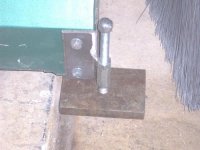W
wnroscoe
Guest
I know this is old hat for the professional machinist/gunsmith here but just a friendly reminder for all of those that have recently purchased the small home/shop lathes. About twice a year I try to check my lathe for level and the way it cuts, taper or no taper. Today I was making a set of bushings and noticed .0006" taper, fat away from the chuck. I chucked up a piece of 1" stainless bar stock and made a .010" cut over 6". Bam, .0006" taper, fat away from the chuck. I raised the front right corner up to remove the taper and got it cutting with no taper. I also noticed that the concrete had actually settled more than I thought it would have. The leveling pads were letting the lathe rock a little. When I first set the lathe up with a machinist level I had to raise the front right corner slightly for a zero taper cut.
Last fall when I checked the lathe with a test cut it was fine, now that summer is here it moved. I thought I would share this with you just to put the thought in your mind, check your lathe periodically both for level and with a test cut to see if taper is present or not. Good luck and thanks to all that have shared info with me.
William
Last fall when I checked the lathe with a test cut it was fine, now that summer is here it moved. I thought I would share this with you just to put the thought in your mind, check your lathe periodically both for level and with a test cut to see if taper is present or not. Good luck and thanks to all that have shared info with me.
William


